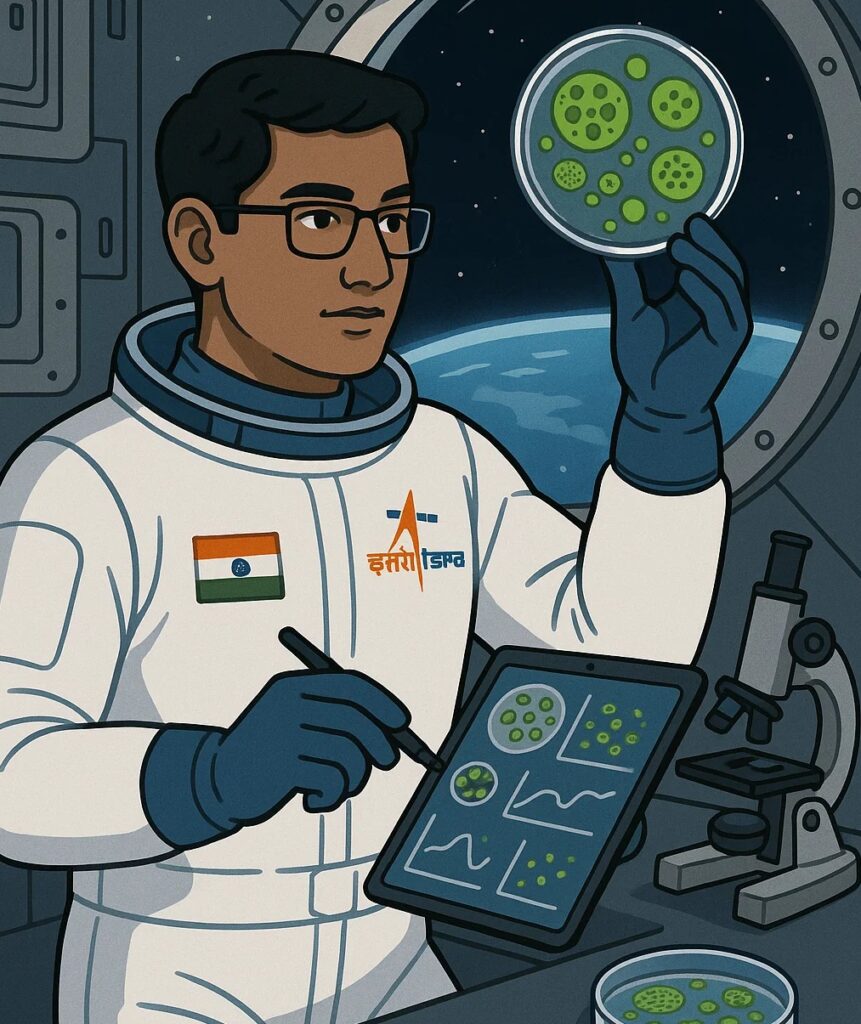Hindi / English
Can Microalgae Feed Astronauts?
One of the key experiments will focus on edible microalgae—tiny organisms packed with nutrients like proteins, healthy fats, and special compounds that benefit the body. What makes them especially interesting is their super-fast growth—some species can double in size in just over a day!
The research will look at how these microalgae behave and grow in microgravity (the near weightlessness of space). Scientists will track changes in their structure, nutrition profile, and growth patterns to figure out which types might be the best candidates to feed astronauts on long missions.

Why Microalgae Matter in Space
Microalgae are more than just a nutritious food source. They also help purify the air by soaking up carbon dioxide and releasing oxygen—a crucial benefit for life in the sealed environment of a spacecraft. Plus, because they can grow densely in small containers like photobioreactors, they’re ideal for places where space is limited.
For future missions that may last months or even years, this kind of sustainable, space-saving food system could be a game-changer.
Exploring Cyanobacteria: Nature’s Powerhouses
Another part of the mission will explore cyanobacteria—specifically Spirulina and Synechococcus. These are known for their high nutritional value and are often called “superfoods” here on Earth. Scientists will compare how they grow using two different types of nutrients—urea and nitrate—when exposed to microgravity.
These organisms grow quickly and perform photosynthesis very efficiently. That means they could help turn human waste into valuable nutrients and oxygen, which is vital for creating a self-sustaining life-support system in space.
The Biofoundry Behind the Mission
These innovative experiments are being made possible by the newly opened DBT-ICGEB Biofoundry in New Delhi. This cutting-edge lab uses a modern “Design, Build, Test, Learn” approach to speed up biotech development. It focuses on using microbes to create useful products for food, agriculture, medicine, and more.
What’s more, the Biofoundry is set up to help Indian startups and manufacturers turn scientific breakthroughs into real-world products—making it a vital link between research and practical innovation.
